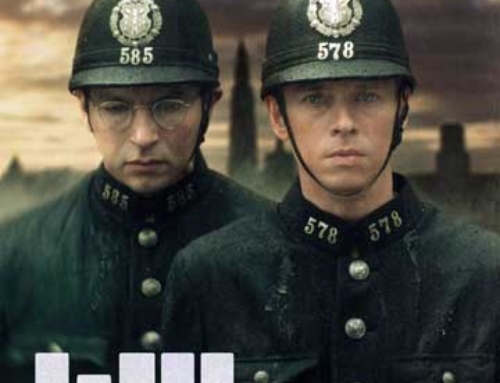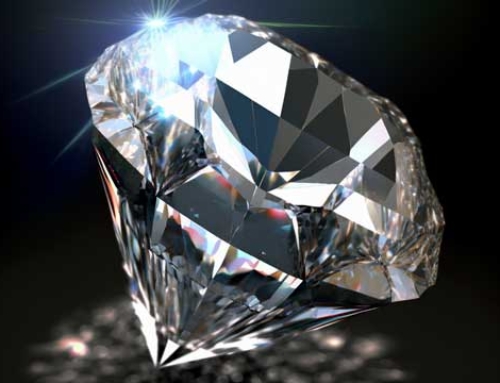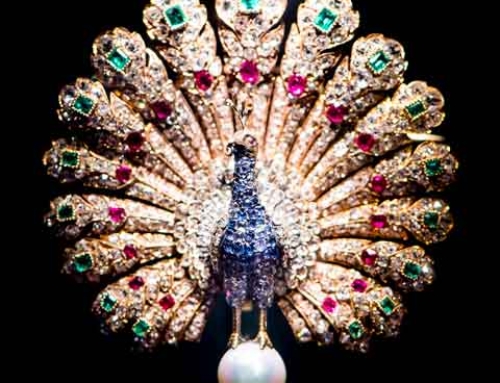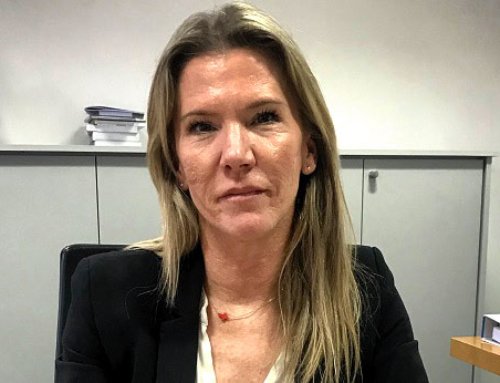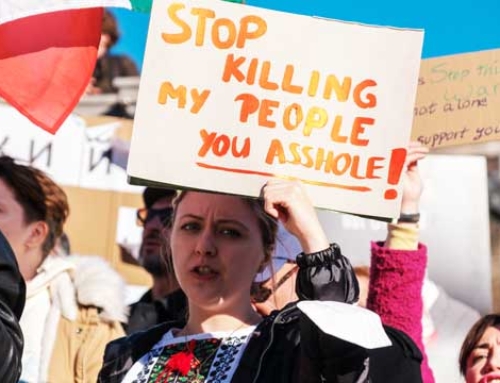In Antwerp, the supply of diamonds from Russia is stagnating. And what does come is rejected by some customers. “The war in Ukraine is bound to lead to bankruptcies here.“
To get into Johan Van Camp’s dark, gleaming tiled jewellery shop on the Rijfstraat in Antwerp, in the heart of the diamond district, customers have to pass through two doors before they reach the counter. The years of daily robberies are over after the introduction of the special police unit Goudi, but still, the diamond business remains a risky and especially a very expensive one.
Before the Russian invasion of Ukraine, more than 130 million euros worth of diamonds were being channelled through a neighboring property on a daily basis. Since then, the trade in diamonds has been drying up. Imports are becoming more difficult and there are more and more problems on the demand side. And these can be felt in the Diamond Quarter, where men with Indian features and suitcases in their hands walk the streets while trying to sell their purchased stones by phone.
Johan Van Camp tells his cashier that recently more and more customers are asking where the gems in his jewellery come from. Surely not from Russia?
He is not usually able to answer that question, although he knows that a substantial part of his business is extracted from Siberian mines.
Russia is the largest supplier of rough diamonds; 30 percent of the world’s traded rough diamonds come from Russia. A third of these go to Antwerp, via the Indian port of Surat. There, 90 percent of all rough diamonds from all over the world are cut or polished. From that moment on, the stone is an Indian product; a certificate of origin is almost never issued, no matter where the stone originally comes from.
Van Camp also explains this to his customers. And then some go to a shop that only works with gemstones from Canada or Botswana. They are clear about their reason: they do not want to wear conflict diamonds.
Link between diamonds and invasion
That Russian gems can be so is shown by a recent report of the IPIS (International Peace Information Service), a Belgian research bureau that advises on human rights in conflict areas. According to IPIS, there is a clear link between the Russian diamond trade and the invasion of Ukraine.
The Russian Alrosa, a conglomerate of diamond companies and one of the largest players in the world, is one third owned by the Russian state and another third by the autonomous region of Yakutia in Siberia, where the mines are located. Alrosa invested in a Russian Navy submarine back in 1997 with the aim of keeping the ship “combat ready“, according to one of the company’s newsletters. In gratitude, the submarine was christened the Alrosa in 2004. Ten years later, soldiers for the Russian annexation of the Crimea were trained on the same ship with Alrosa’s support.
The Belgian newspaper Het Laatste Nieuws found out that Alrosa has been cooperating with Rosatom, the Russian nuclear agency, since 2008. In a reaction, the company says it has nothing to do with uranium mining, nor with the production of nuclear weapons. The cooperation would involve sharing knowledge about mine safety.
At the end of February, a day after the Russian invasion of Ukraine, the US put Alrosa’s CEO Sergey Ivanov on a sanctions list because of his ties to Russian President Vladimir Putin. Ivanov belongs to Putin’s most loyal group of confidants. His assets in the US were frozen and this prevented him from doing business in the US or with Americans.
Two weeks later, the US also decided on a complete ban on imports of rough diamonds from Russia. According to experts, the impact of these sanctions was minimal: the US is mainly a consumer market for diamonds, and the origin of those processed diamonds is, as said, rarely traceable. In other words: Russian stones continued to find their way.
Fearing damage to their reputation, international jewelers such as Tiffany & Co, the Swiss watch brand Chopard and the world’s largest jewellery retailer Pandora subsequently decided to ‘pause’ their cooperation with Alrosa.
But in Antwerp, which because of its strategic location has been the world’s most important market place for gems since the fifteenth century, there was no desire to stop the import of Russian diamonds. Not even after the Ukrainian president Zelensky had said to the Belgian government at the end of March that “peace is worth much more than diamonds”, and confronted the country with an export product that helps to finance a war.
Prime Minister Alexander De Croo always refers to the reasoning of the European Commission that sanctions should only be taken if they hurt Russia more than they hurt Europe. “If we stop importing diamonds, that trade would move to Dubai in a day,” he said. “The impact on Russia in that case would be zero, that on Europe very large.” He did say, however, that Belgium would not oppose it should the European Commission decide otherwise.
In a boardroom on the ninth floor of an office in Antwerp’s Diamond District, Tom Neys used words to the same effect. He is head of communications for the Antwerp World Diamond Centre (AWDC), which represents the interests of diamond traders in Belgium. “With a ban on Russian stones we would only be cutting our own meat,” he says. “It would cost ten thousand jobs in one go. And you wouldn’t hit the Russians. They just fly their stones on to Dubai. You let $1.8 billion flow to a country where Syrian President Assad was recently welcomed with open arms. Anyone who says that an import ban is a more ethically correct decision is peddling nonsense.”
Film Blood Diamond
The Belgian diamond sector had picked up in recent years after the damage caused by the successful Hollywood film Blood Diamond in 2006. The film, starring Leonardo di Caprio, is set in Sierra Leone, where gems are sold for the benefit of murderous rebel groups. Diamond dealers, already part of a closed network of formerly mainly Jewish but now Indian families, retreated even further into blinded office buildings in the Diamond Quarter, often with only a desk and a lamp to appraise diamonds.
Partly due to the film, the diamond sector in Antwerp realized that regulation was necessary to regain consumer confidence. Labels were introduced to make money laundering and fraud more difficult. Many companies moved to Dubai, because of the lack of supervision there. What remained in Antwerp were companies that prided themselves on their transparency and ethics. They said they only worked with gems certified by the Kimberley Process, a United Nations-initiated body that monitors compliance with a trade ban on conflict diamonds.
But recently, criticism of the Kimberley Process has been growing because Alrosa’s diamonds still carry its seal of approval. This is because the body only decides by consensus. And since Russia is part of it, it doesn’t look like Russian diamonds will be labelled as a bad trade any time soon.
“Blood diamonds have been eliminated for over sixteen years,” said Tom Neys on behalf of the AWDC. “What is happening in Russia now is different from what was happening in Africa at the time. If you start banning Russian diamonds now, you might as well stop using mobile phones. For the raw materials in batteries and screens, we also trade with bad regimes. Do you call your mobile phone a blood phone?”
Hans Merket, who researches conflicts in places where there are natural resources in the ground on behalf of IPIS and the University of Ghent, thinks that in Antwerp, and therefore in the European Commission, “so far people have hoped that this conflict is a storm that will blow over. But the war in Ukraine will not blow over. You feel that the Russian diamond will have negative connotations for a long time. I hope that Antwerp sees this too. And feels the need to take action.”
According to Merket, the global diamond world should work together to eliminate Russian diamonds. “With the US you have the largest consumer market in the world turning its back on Russia. If Antwerp joins in, you impede that part as well. Together, you have to increase the pressure on India and Dubai. Only then can you have any impact. Belgium always presents itself as a leader for ethical diamonds in the world. So I think it’s now up to the Belgians to proactively set up coordination.”
The chance of international cooperation, however, is small. The World Diamond Council (WDC), the organization representing the sector at the Kimberley Process, has no intention of calling for a boycott of Russian diamonds, says Dutch President Edward Asscher. “Then you would run the risk of being accused by Russia of cartelization. It would mean that we could be held liable for losses suffered by Alrosa. Moreover, a country like India, also a member of the WDC, will never agree.”
In the Belgian government, the diamond dossier is repeatedly discussed. The federal government parties Vooruit and Groen have been trying for weeks to get the ceo of Alrosa on the European sanctions list, but diamonds remained out of reach in the sixth EU package as well.
The threat of a European ban is already having consequences. Traders are no longer sure of their ordered stones. The supply of Russian diamonds in Antwerp has dried up since Russian planes were forbidden to land in the EU. It can take months before a new contract is signed elsewhere in the world, especially in Africa. And there too, many mines have fallen into Alrosa’s hands in recent years.
So the uncertainty in the Antwerp diamond district is growing. Outside the office of a jeweller on Hoveniersstraat, two Indian men in suits are talking loudly to each other about colour and clarity of stones. 750 euros pass from one inside pocket to the other. “What else can I get from you?“, it sounds. The man on the right frowns. “My supplies are running low. Because of you know…”
The men are preparing for the worst, says one of the two after the transaction. “It is inevitable that the war in Ukraine will lead to bankruptcies here. There is no plane bringing Russian stones, and no one who wants to insure them.” The industry is gasping for breath.
Because of the great uncertainty, the Indian diamond dealer Akash Jain, one of the smaller dealers in Antwerp, recently decided to stop all trade in Russian diamonds. How much his International Gem Organisation depended on ‘Russian’, he will not say, that is company-sensitive information. But he is more flexible than the larger companies who are stuck with multi-year contracts with Alrosa.
Jain says he quit not only for economic reasons, but also out of “humanity“. He could not bring himself to co-finance a war. “Russian diamonds have become blood diamonds“, he says frankly. He wants nothing more to do with that.



